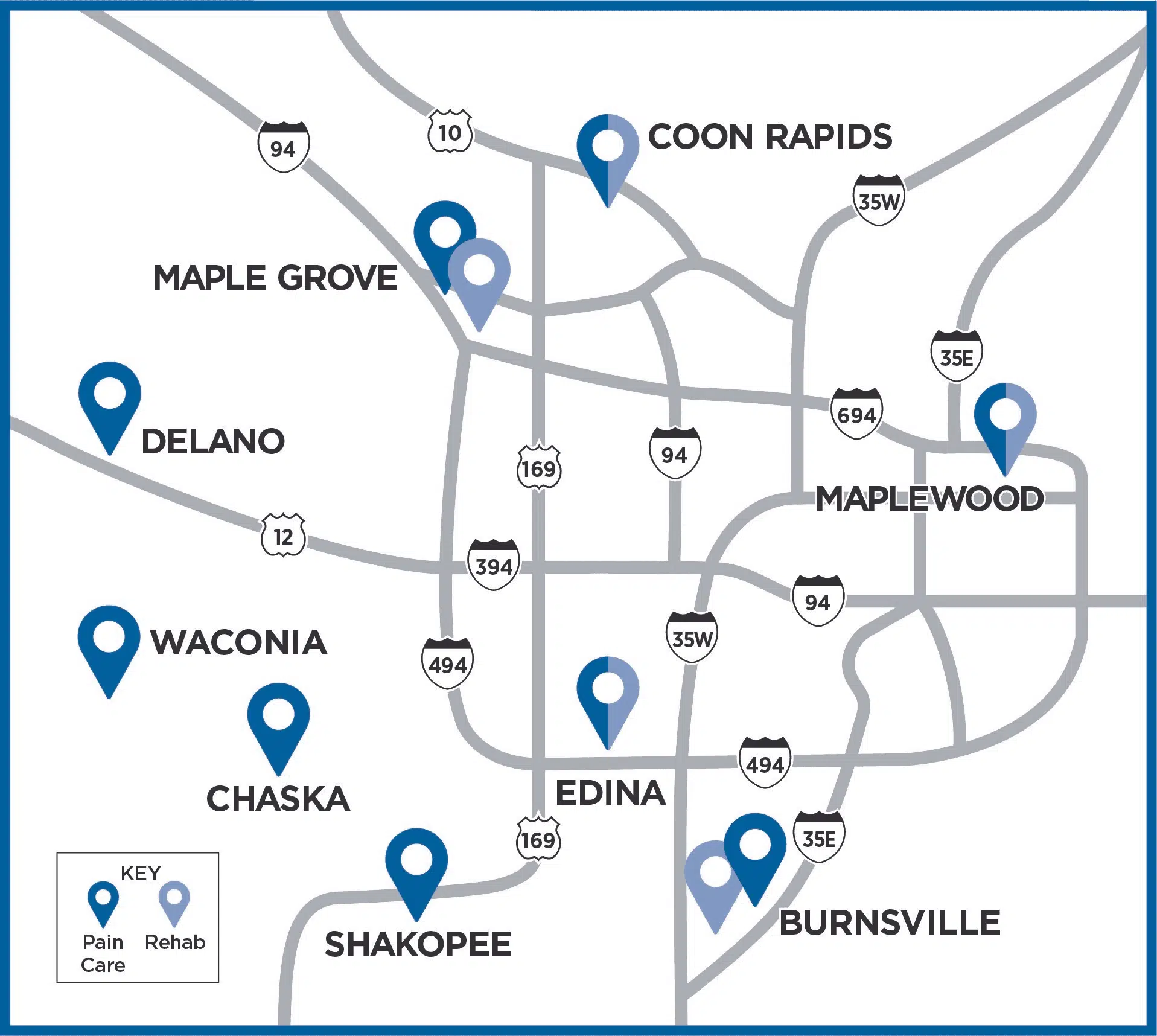Trigger Point Injections
Trigger points are the ‘knots’ you may feel in your muscles that are tender and sensitive to the touch. They are muscle tissues that, through acute injury or repetitive use, have become bound in a contracted state. Trigger point injections are a myofascial therapy treatment that involves injecting a needle, and possibly a local anesthetic, into the area of bound muscle. When no anesthetic is released, it is commonly referred to as dry needling.
What to expect during a Trigger Point Injection procedure
Across iSpine Clinics in the Twin Cities, trigger point injections are an outpatient procedure that may only last a few minutes. Your clinician will identify the trigger point based on your description of the pain and by feeling your muscles and tissue. They may poke the point to help localize it or pinch it to stabilize the tissues. This can often be uncomfortable but shouldn’t last long.
Depending on the location of the trigger point, you’ll either sit or lie down on the exam table. Your skin will be cleansed with alcohol, and your trigger point will likely be marked with a skin marker. A thin syringe needle will be inserted into your trigger point, and local anesthetic will be released to relax the muscle. The clinician may repeatedly reinsert the needle in different areas or directions to inject anesthetic into the entire trigger point.
You may experience muscle spasms during the process. Your clinician will continue the process until the muscle relaxes and the twitching resides. Once they are satisfied with the release of bound tissue, they will remove the needle and potentially bandage the site. Your procedure is complete.
What to expect after a Trigger Point Injection
When your procedure is complete, you will be able to use the body part that has been treated, though your clinician may ask you to go easy on it for a few days. You may be advised to stretch periodically for the next 24-48 hours. It’s likely you won’t have any side effects from the treatment, but the most common side effect that people experience are soreness around the treatment site, numbness from the anesthetic, or bruising. For most patients, pain relief begins 24-72 hours after the session, and can last for up to a month.
Explore the Twin Cities Metro Clinics where we evaluate patients for Trigger Point Injections
*Clinics where Trigger Point Injection procedures are conducted

Dark blue pins represent iSpine Pain Clinic locations

